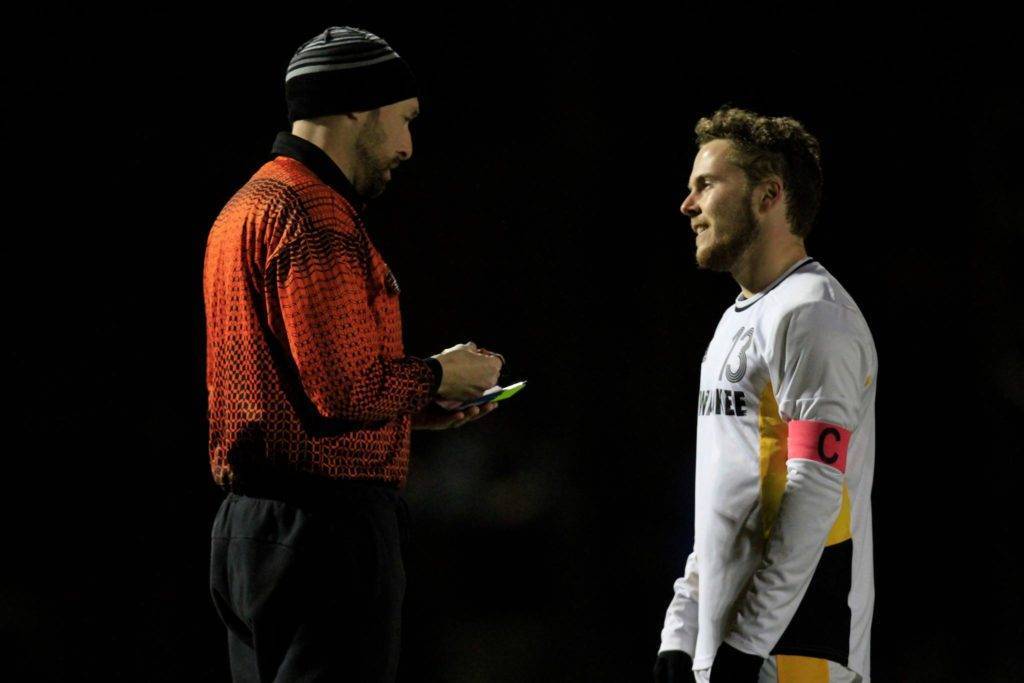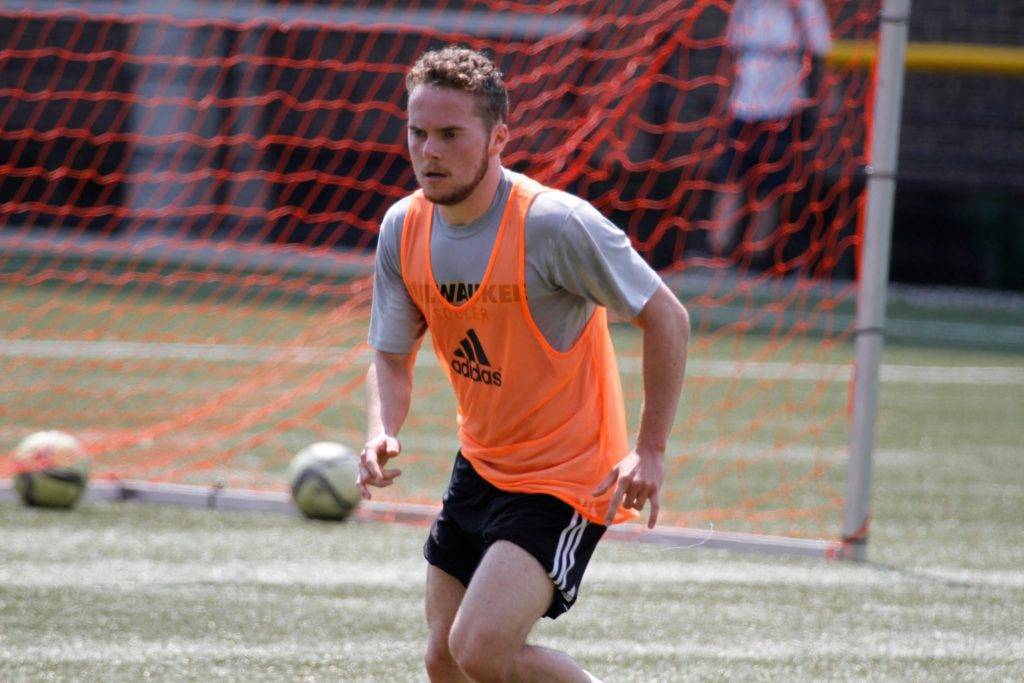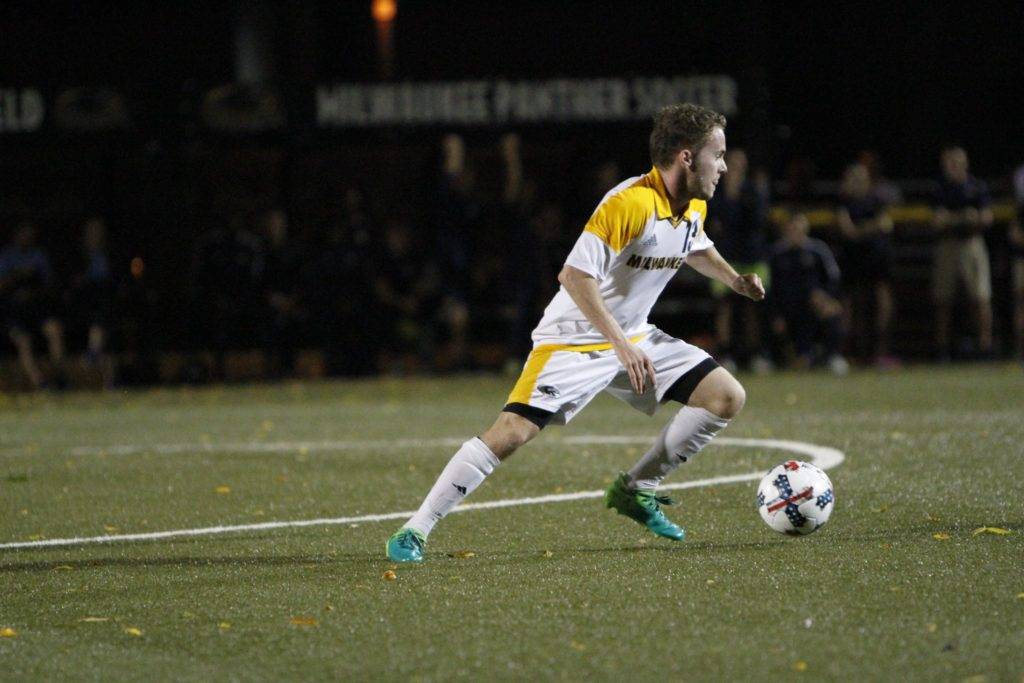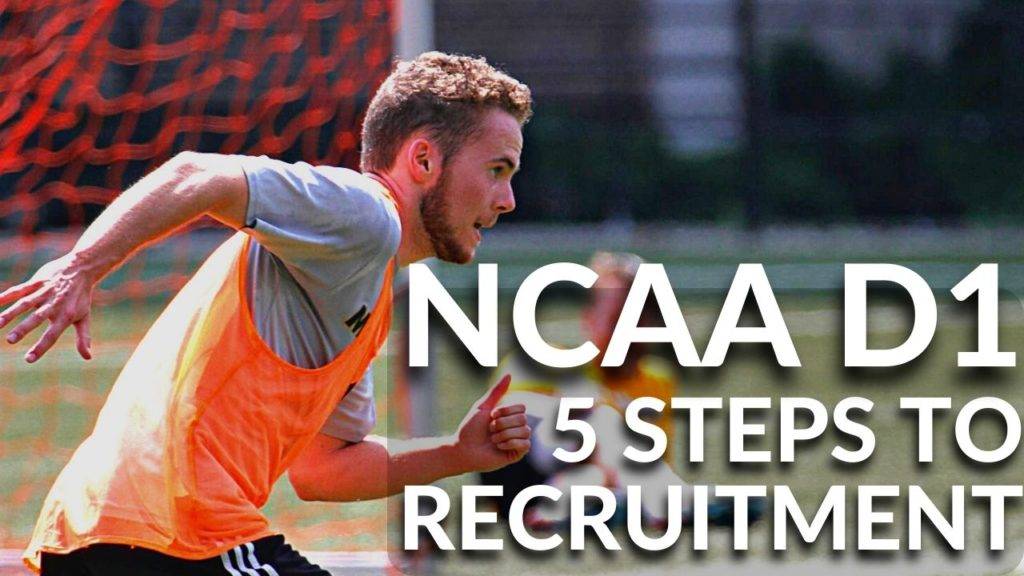In 2019-2020, there were approximately 395 000 females and 455 000 males playing high school soccer in the USA according to the NFHS (National Federation of State High School Associations).
Of these, approximately 3.5% of females, and 2.4% of male soccer players will play NCAA division 1 according to the NCAA.
I hope you can gain a grasp with those stats of how challenging it is to step into the NCAA division 1 level as a young footballer.
Now, imagine you don’t go to high school in America – those odds just got even harder!
But, it’s not an impossible feat – it’s not easy, but it’s not impossible.
I know this because I did it, and I know others who have travelled across the borders and accomplished successful careers playing NCAA division 1.
That being said, there are several things you can and need to do in advance to making this life changing decision and taking this massive step in your life as a player and person.
Here is a generalized 5-step overview of the preparation it takes to play NCAA division 1.
Note: There is no ‘one size fits all’ when it comes to the recruiting process and playing NCAA soccer. Ultimately, these are generalized guidelines and tips you can take that will hopefully give you a better idea of what it takes to prepare and earn the opportunity of playing NCAA soccer.

Step 1: Build Your Skills and Reputation
The first step to getting recruited is to develop your skills and build a reputation as a talented player in your region. This means practicing regularly, playing in competitive leagues and tournaments, and seeking out opportunities to showcase your ability. Attend soccer camps and clinics, join a club/academy team at the highest level in your region, participate with reputable select teams, and attend ID camps where coaches are present. This will help you gain exposure and recognition among coaches and scouts.
In terms of ID camps, these are designed specifically for recruiting purposes and can be a great way to get in front of college coaches. Some ideas include:
- Specific College/University Program ID camps: Many colleges and universities offer ID camps for potential recruits. These camps provide an opportunity to train with the coaching staff, tour the campus, and get a feel for the program.
- Showcase tournaments: Showcase tournaments bring together top high school and club teams from around the country, providing exposure to college coaches from all levels. Some examples include Future 500 ID camp, FTF Canada, Surf Cup, and NSCA Sports.
- Regional and national combines: These events bring together top players from a specific region or across the country, allowing them to compete against one another and catch the eye of college coaches. These could be national team programs, or professional academies such as the Vancouver Whitecaps, Toronto FC, or Montreal Impact.
Ultimately, it’s important to do your research and select clinics that align with your goals and needs as a player. Reach out to the organizations themselves, or former players that took part in camps you’re interested in to gain as much information as you can before making any decisions.
Remember, the more exposure you have to the college game and their coaches, the better your chances are of getting recruited to play NCAA Division 1 soccer.

Step 2: Create a Player Profile
To get noticed by coaches, you should create a player profile that showcases your skills, achievements, and potential. Include your playing position, height, weight, and other relevant stats. Add videos/highlights of your games and training sessions, and provide contact information for yourself and your current coach(es). You can also include academic achievements, extracurricular activities, and volunteer work to demonstrate your well-roundedness.
Creating a player profile is an important step in the recruiting process as it provides college coaches with a quick and easy way to learn more about you as a player. Here are some tips for creating a player profile:
- Research and Choose a Platform: There are several platforms available for creating player profiles, including CaptainU, NCSA, and SoccerWire. Consider the features and cost of each platform before choosing one.
- Include basic information: Your profile should include basic information such as your name, age, position, and contact information.
- Highlight your strengths: Use your profile to showcase your strengths as a player. This can include your technical skills, athleticism, work ethic, and leadership abilities.
- Highlight your achievements: Include any awards, accolades, or accomplishments you have achieved as a player, such as MVP awards or championships.
- Add stats and video: Consider including your statistics and highlight reels on your profile. This will give coaches a better idea of your abilities on the field.
- Keep it up to date: Make sure to keep your profile up to date with your latest stats, achievements, and highlight reels.
- Be professional: Your profile should be professional and free of any inappropriate content or language.
When it comes to choosing a platform for your player profile, consider the features and cost of each platform before making a decision. CaptainU, for example, offers tools for tracking communication with coaches and managing the recruiting process. NCSA offers a similar set of tools, as well as the ability to connect with college coaches and receive guidance throughout the recruiting process.
That being said, it’s not 100% necessary to create a profile with one of these platforms. Ultimately, you can create opportunities for yourself through contacting coaches by yourself, and although it takes more work on your end, it is a more affordable option.
Overall, your player profile should provide college coaches with a comprehensive look at your abilities as a player and give them a reason to take notice of you. Make sure to highlight your strengths and achievements, and keep your profile up to date with your latest information.

Step 3: Contact Coaches and Scouts
Once you have your profile ready, it’s time to start contacting coaches and scouts. You can do this by sending them your profile via email or using a recruiting platform like NCSA or FieldLevel.
Be sure to personalize your message to each coach, and highlight what you can bring to their team. Avoid sending mass emails, or messages that lack detail or thoughtfulness. You want to show coaches that you are serious and committed to playing at the next level with them.
Here are some tips for contacting NCAA coaches as a young player:
- Identify potential schools & Organizations (NCAA, Usports etc.): Do your research to identify schools and organizations that match your academic and athletic goals. Look for schools that have soccer programs that align with your skills and interests as a player and person.
- Reach out to coaches: Once you have identified potential schools, reach out to the soccer coaches via email or through the school’s recruiting website. Introduce yourself, provide a brief overview of your skills and accomplishments, and express your interest in the program. An important note is to identify how your strengths as a player can help the coach and their team. Offer what you bring to the table as a player and person that will help the team win games and enjoy success as a program, as at the end of the day, that’s what’s most important for the coach and the school.
- Provide a link to your player profile: Include a link to your player profile in your email to the coach. This will allow the coach to learn more about you as a player and see your skills in action.
- Follow up: If you don’t hear back from a coach right away, follow up with a polite email a few weeks later to reiterate your interest in the program.
- Attend ID camps: Attend ID camps hosted by the schools you are interested in. This will give you the opportunity to meet the coaching staff, showcase your skills, and get a better feel for the program.
- Be patient: The recruiting process can be a long and arduous one, so it’s important to be patient and persistent. Keep working hard and improving your skills, and don’t be discouraged if you don’t hear back from a coach right away.
Ultimately, the key to contacting NCAA coaches as a young player is to be proactive and persistent. Identify potential schools, reach out to coaches, provide a link to your player profile, attend ID camps, and be patient.

Step 4: Attend Showcases and Tournaments
Attending showcases and tournaments is a great way to get exposure to coaches and scouts. These events bring together players from all over the country, giving you the opportunity to showcase your skills and get noticed by top programs. Attend as many events as you can, and make sure to stand out on the field. Play with intensity, show off your skills, and be a team player. Coaches are not just looking for talent, but also for players who are coachable and can work well with others.
Similar to mentioned earlier in this article, some showcase tournaments you can look into are:
Future 500 ID camp
FTF Canada
NSCA Sports.
Step 5: Keep Your Grades Up
Lastly, it’s important to remember that academics play a big role in the recruiting process. NCAA Division 1 programs have academic standards that players must meet in order to be eligible to play. Keep your grades up, take challenging classes, and work with your high school guidance councillor to ensure you are on track to meet NCAA eligibility requirements. Academic excellence will not only help you get recruited, but also open doors for scholarships and other opportunities outside of football.
In conclusion, if you are a young soccer player outside the USA, there are several steps you can take to get recruited by NCAA Division 1 programs. Develop your skills and reputation, create a player profile, contact coaches and scouts, attend showcases and tournaments, and keep your grades up. By following these steps, you can increase your chances of catching the eye of coaches and earning a scholarship to play at the next level.

